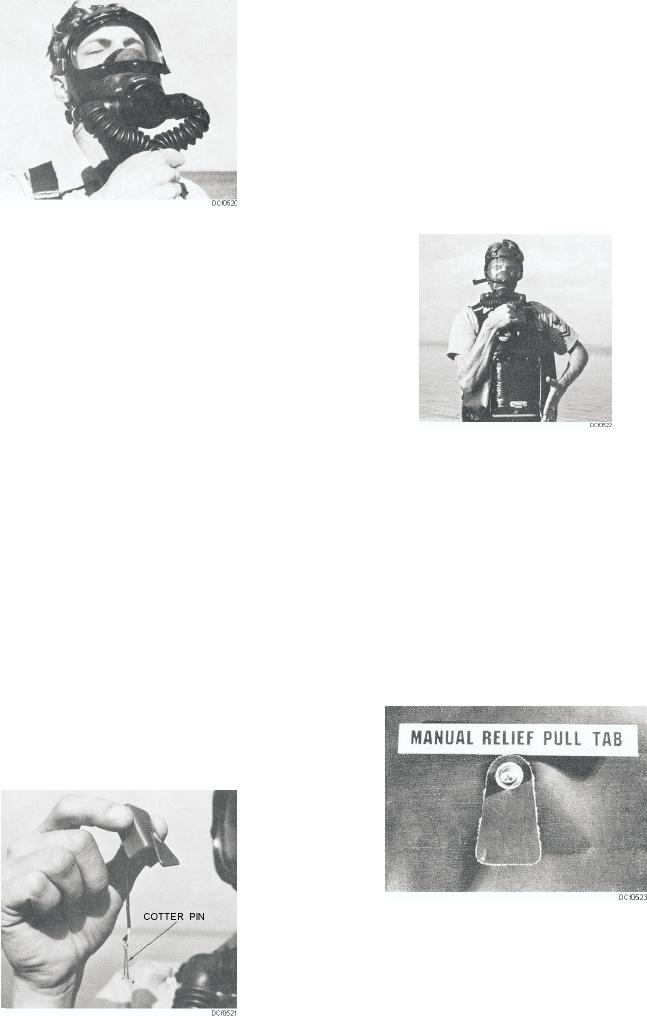
Step 4. Now, test the tube connectors, canister,
and breathing bags for tightness. While the candle is
filling the breathing bag, depress the breathing bag at
the pull tab with your left hand. Grasp and seal off both
breathing tubes with your right hand, while pressing
against the right side of the breathing bag with your
right elbow (fig. 5-22). The bag must be compressed at
the pull tab so that the relief valve does not vent during
this test. The bag must remain inflated; otherwise, there
may be a leak in the OBA, which you must correct
before use.
Figure 5-20. Step 7, checking the airtightness of the facepiece.
Step 9. If you are going into a standby or ready
condition, loosen only the lower facepiece straps and
then remove the facepiece. Place the facepiece over
your head and out of the way until ready to start the
canister and put the OBA into operation. In an
emergency, eliminate this step.
STARTING THE CANISTER.-- When ordered
to enter the contaminated area, you start the canister in
the following manner:
Figure 5-22. Testing the OBA.
Step 1. If your facepiece is in the standby position,
Step 5. Breathe normally. The chemical reaction
put it on before starting the canister. Retighten the lower
of the canister will generate more oxygen than you
straps and retest your facepiece for a proper seal.
require. If too much oxygen is produced, the extra
Step 2. Unlock the bail assembly handle of the
oxygen will be vented automatically by the relief valve
OBA by using both hands to depress the tabs from the
in the bag when the bag reaches full capacity. A manual
bottom lock. Swing the handle upward until it snaps.
relief pull tab on the valve (fig. 5-23) is provided in case
Test the handle to see if it is locked by lightly pushing
the valve sticks in the closed position during a long
the handle forward without depressing the tabs.
period of storage. Do NOT pull the breathing bag tab
during normal use. If you do, you will vent your
Step 3. Pull the lanyard on the canister straight
breathing oxygen from the breathing bag to the
out and away from your body. This removes the cotter
atmosphere.
pin (fig. 5-21), fires the candle, and inflates the
breathing bag with oxygen. After you pull the lanyard,
always check to ensure that the cotter pin is still attached
to the lanyard. A slight amount of harmless smoke may
be present in the facepiece while the candle is burning.
Figure 5-23. Manual relief valve tab.
In the event of a malfunction of the candle, you can
activate the canister manually. The manual starting of
the canister is not recommended. The procedures listed
here are to be used only when the chlorate candle has
misfired and sufficient time is available to start the
Figure 5-21. Checking for the cotter pin.
5-10

